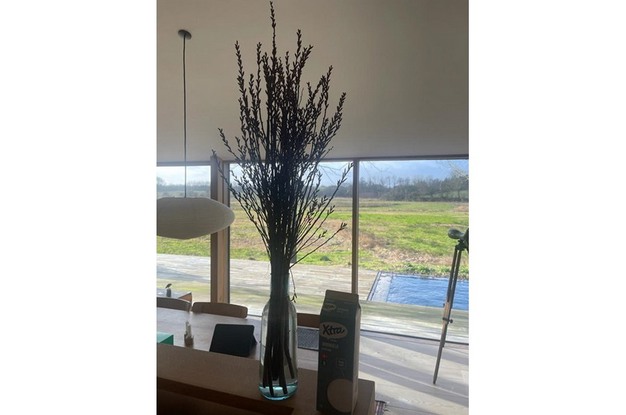"To our knowledge, we are (among) the first in the world who grow bog Myrtle in culture, and more interesting, most likely the very first to bring cloned bog Myrtle to the market", says Jens Søe, Sia Talcis, on producing straight-stemmed bog Myrtle for next year's spring/Easter season.

Although summer may feel like it just ended, winter is approaching, and we are heading towards Christmas. At Sia Talcis, a bog Myrtle producer in Latvia, the preparations for the holiday season are already in full swing; the branches of the bog Myrtle are regularly used in floral arrangements and are particularly popular during Easter and indeed Christmas, tells Søe, who is director at Sia Talcis. In 2004, Jens Søe and his business partner Kristian Skannerup purchased the previous old collective farm, Sia Talcis, in the north of Latvia only 2 km from the Estonian border. It's in those surroundings with lots of nature and wildlife where they began their bog Myrtle project. "To our knowledge, we are (among) the first in the world who grow cloned bog myrtle in culture," states Søe. Recently, they planted 5 hectares of their land with this deciduous shrub, aiming to introduce straight-stemmed, pesticide-free bog Myrtle to the market.
Producing straight stems
They started to cultivate bog Myrtle after they learned that Poul Kristensens, a retired tissue culture specialist, managed to develop a straight bog Myrtle stems. "The straight stems are more suitable for the florist market, and can be grown and harvested more efficiently with less waste product. "In the wild, bog Myrtle grows on heathers and in bogs. People who harvest them have to cover long distances to cut the stems. Moreover, these stems are often crooked, and only about 30% can eventually be used in the floral industry. By comparison, from the straight-stemmed bog Myrtle that is produced on our fields, about 90% can be used in flower arrangements. At our farm, we seek to exactly deliver the product that the market demands, both in terms of quantity and quality.

Myrica Gale being grown at Sia Talcis
Starting up production has not been without challenges, postponing the introduction of Sia Talcis' product on the market. Søe: "We first planted in Autum 2016, in Spring 2017 almost all plants were pushed up by plant holes during the spring thaw of the frozen Baltic soil. Luckily, we discovered this early enough to get them stuffed back down, but we had to replant about 30% the following year. Moreover, the entrepreneurs found that the Myrtle had to be cut a few times before it bushed appropriately and with the desired straight stems." He also highlights that his year was a good one thanks to large amounts of rainfall which make the bog Myrtle shrub thrive.

Myrica Gale used for ornamental purposes
Preparing for sales
Now, they prepare to sell the stems to wholesalers and florists in Europe, expecting to bring the first 300,000 – 400, 000 pieces to the market this season. "We are ready to deliver the first batches and we welcome serious contacts from wholesalers who are interested in creating long-term cooperation and meeting the requirements in the market." Currently the market demands stems with a length of 45 cm, 55 cm, 65 cm. "With the optimal culture we might even be able to supply with an additional length of 75 cm, if there is a demand in the market", Jens Søe states. Plans to increase production are already under way. "Within the next 2 years, we will be able to produce approximately 1 million stems annually. In addition to the 5 ha that we currently use, an additional 7 ha has been fenced off and set aside for possible expansion, as we want to be sure that we can meet demand."
But for now, they will first focus on the upcoming Easter season. Rumors says that the market also demands Myrtle for Christmas… This could also be interesting, but the challenge here is that the Myrtle might still not have lost its summer leaves in due time to comply. But with the cold eastern climate, this might very well be possible.
For more information:
Sia Talcis
Jens Søe
Mail: [email protected]
Kristian Skannerup
Mail: [email protected]
LinkedIn:Bog Myrtle Sia Talcis Latvia










